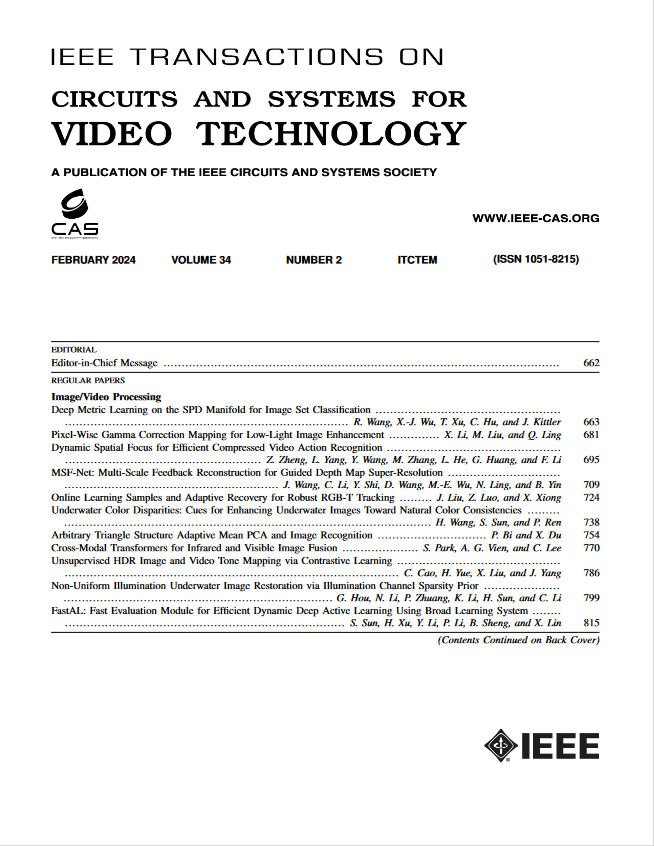一种基于三维点云的bsamzier分解学习框架
IF 8.3
1区 工程技术
Q1 ENGINEERING, ELECTRICAL & ELECTRONIC
IEEE Transactions on Circuits and Systems for Video Technology
Pub Date : 2024-12-11
DOI:10.1109/TCSVT.2024.3514740
引用次数: 0
摘要
本文提出了一个完全可微的端到端框架,用于学习三维点云上的bsamizier分解。该框架旨在通过学习得到的bsamzier分解过程,将输入点云划分为多个bsamzier原语块。不同于以往的方法分别处理不同的原语类型,从而被限制在特定的形状类别,我们的方法寻求在点云上实现广义的原语分割。从NURBS模型上的bsamzier分解中获得灵感,我们将其应用于指导点云分割,而不依赖于预定义的基元类型。为了实现这一目标,我们引入了一个联合优化框架,该框架在级联架构中同时学习bsamizier原始分割和几何拟合。此外,我们提出了一个软投票正则化器来增强原语分割,并提出了一个自动权重嵌入模块来有效地聚类点特征,使网络更加鲁棒,适用于各种场景。此外,我们还结合了一个重建模块,能够同时处理具有不同原语的多个CAD模型。在合成ABC数据集和真实扫描数据集上进行了大量实验,以验证我们的方法并将其与几种基线方法进行比较。结果表明,我们的方法在分割精度方面优于以往的工作,同时也表现出明显更快的推理速度。本文章由计算机程序翻译,如有差异,请以英文原文为准。
A Novel Framework for Learning Bézier Decomposition From 3D Point Clouds
This paper proposes a fully differentiable and end-to-end framework for learning Bézier decomposition on 3D point clouds. The framework aims to partition input point clouds into multiple Bézier primitive patches through a learned Bézier decomposition process. Unlike previous approaches that handle different primitive types separately, thus being limited to specific shape categories, our method seeks to achieve a generalized primitive segmentation on point clouds. Drawing inspiration from Bézier decomposition on NURBS models, we adapt it to guide point cloud segmentation without relying on pre-defined primitive types. To achieve this, we introduce a joint optimization framework that simultaneously learns Bézier primitive segmentation and geometric fitting in a cascaded architecture. Additionally, we propose a soft voting regularizer to enhance primitive segmentation and an auto-weight embedding module to effectively cluster point features, making the network more robust and applicable to various scenarios. Furthermore, we incorporate a reconstruction module capable of processing multiple CAD models with different primitives simultaneously. Extensive experiments were conducted on both synthetic ABC datasets and real-scan datasets to validate and compare our approach against several baseline methods. The results demonstrate that our method outperforms previous work in terms of segmentation accuracy, while also exhibiting significantly faster inference speed.
求助全文
通过发布文献求助,成功后即可免费获取论文全文。
去求助
来源期刊
CiteScore
13.80
自引率
27.40%
发文量
660
审稿时长
5 months
期刊介绍:
The IEEE Transactions on Circuits and Systems for Video Technology (TCSVT) is dedicated to covering all aspects of video technologies from a circuits and systems perspective. We encourage submissions of general, theoretical, and application-oriented papers related to image and video acquisition, representation, presentation, and display. Additionally, we welcome contributions in areas such as processing, filtering, and transforms; analysis and synthesis; learning and understanding; compression, transmission, communication, and networking; as well as storage, retrieval, indexing, and search. Furthermore, papers focusing on hardware and software design and implementation are highly valued. Join us in advancing the field of video technology through innovative research and insights.

 求助内容:
求助内容: 应助结果提醒方式:
应助结果提醒方式:


